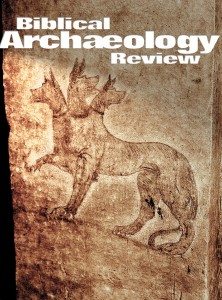IAA Geologists Repeatedly Err
Sidebar to: The Seventh Sample
In our previous issue, geochemist James Harrell called attention to three very basic flaws in the scientific findings of the geologists on the committee of the Israel Antiquities Authority (IAA) that declared the James ossuary inscription to be a fake.a The inscription reads, “James, the son of Joseph, the brother of Jesus.”
Now it turns out that the geologists on the IAA committee, whose views appear to underlie the committee decision as a whole, erred as well in assessing another inscription judged by the committee to be a fake, the so-called Jehoash inscription.b The inscription recounts repairs made to Solomon’s Temple and is engraved on a stone plaque.
According to IAA committee member Yuval Goren, a Tel Aviv University archaeologist who specializes in ceramics, the inscribed stone plaque is made of metamorphic greywacke. This type of stone is “not native to Israel,” Goren writes. In his judgment, the stone probably comes from Cyprus—no doubt imported by the forger.
But, according to a geologist who has seen it, the stone is not metamorphic greywacke. It is arkosic sandstone. And arkosic sandstone is common near the Dead Sea, in Sinai and at sites in Israel.
Why did Goren make this mistake? Perhaps he will tell us. However, he apparently could not tell the difference between the two types of stone.
Already a library member? Log in here.
Institution user? Log in with your IP address.

